
The painting “Dance” of the popular modernist of the end of the 19th and early 20th centuries, Alphonse Mucha, resembles a fabulous illustration. The rich contrasting colors and decorativeness of the main character against the background of the ornamental plan are characteristic elements of the modernist branch – art nouveau. This branch of art was especially loved by the author and sounded in many of his collections.
“Dance” Flies – bright lithography. As a wonderful poster artist and designer, Mucha loved lithography with its complex execution, filling stencils with paint and a rich result. Such a technique made it possible to produce very juicy canvases thanks to a special pigment and an original author’s impression. Presented lithography with a dancing woman is a dynamic work.
In motion, both the heroine, and a piece of drapery behind her back, and a shock of fiery hair, and a train froze. Like a piece torn from a perky dance, a scene is depicted in a bright canvas. Despite the plasticity of the heroine, her forms are appetizing and far from the ballet ideal. Perhaps it is a commoner or the personification of the dance itself in the form of a half-naked Virgo. Crimson cheekbones talk about the body heated by the dance. Like a gingerbread loaf, a woman crunches a brown elastic crust of skin, warmth, fresh and appetizing. Alphonse Mucha razul his dancer, however, his women are always barefoot. Moreover, the light fabric that covered the round chest, hurries to fall to the legs of a woman. How she keeps is a mystery. Petals of kraplaka smears resemble poppy scraps. They wind up, filling the background and giving additional dynamics of perpetual motion.
To decorate the void angles, the artist resorted to an ornament of stylized insects. These are white butterflies, huddled together. They hover over dry chrysanthemum heads. The loop of the fabric passes into the thin lines of the track running forward. The frame of the picture is stylized as a thin thread of rope, braided into a complex macrame. Many intersections of curls, rounded lines, contours, flying away in weightlessness – signs of Modernity.
The author plays with straight lines, smashing them into pieces, bending draping folds, imparts a wax dancer’s body, forcing not only the heroine to dance, but also the look of the stunned spectator, especially the one who was born a man. This work is berry, summer, musical. The contrasting palette of the foreground harmonizes perfectly with the faceless blurred background. The color of the canvas is very warm, almost burning, like spicy Mexican beans. A touch of color complements the sharpness of the dance of the hot Alfonso girl.
 Artist by Alphonse Mucha
Artist by Alphonse Mucha Spring by Alphonse Mucha
Spring by Alphonse Mucha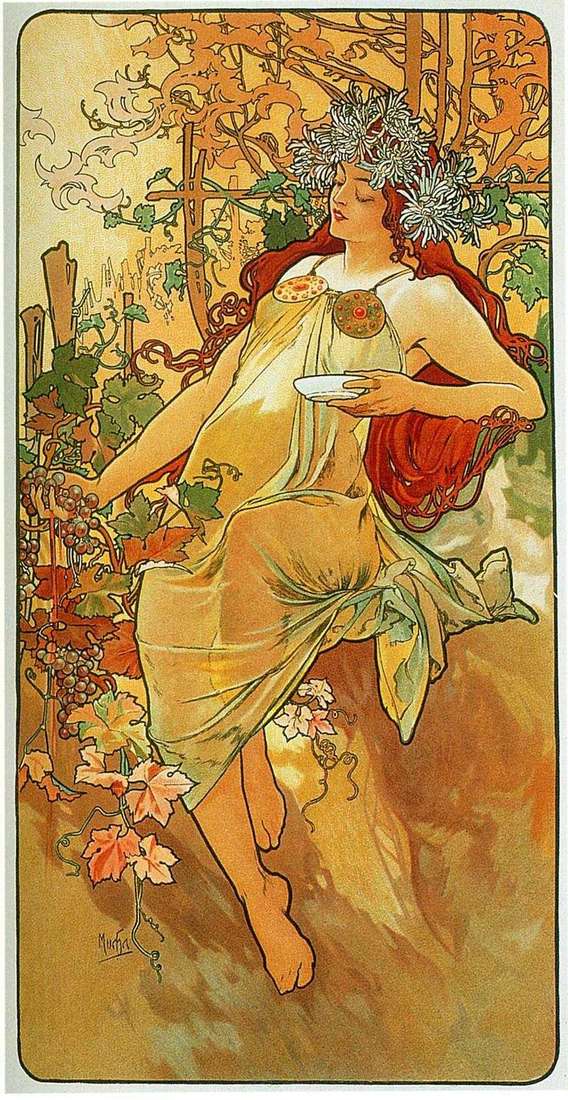 Autumn by Alphonse Mucha
Autumn by Alphonse Mucha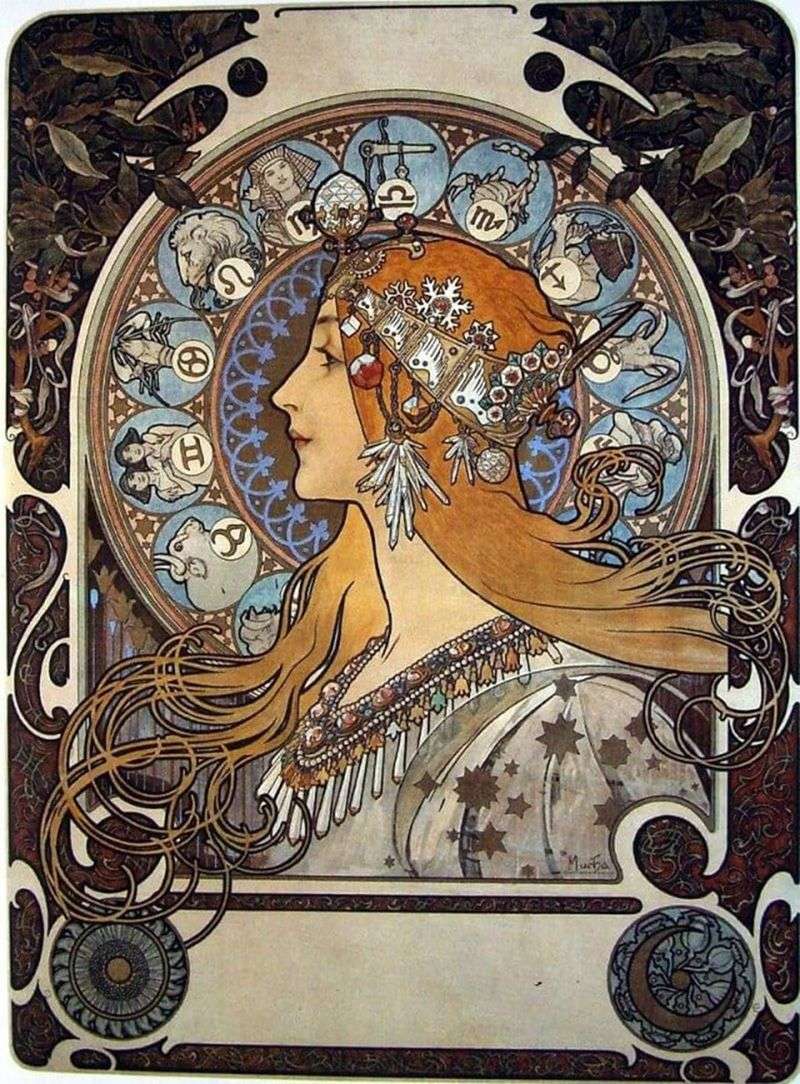 Zodiac by Alphonse Mucha
Zodiac by Alphonse Mucha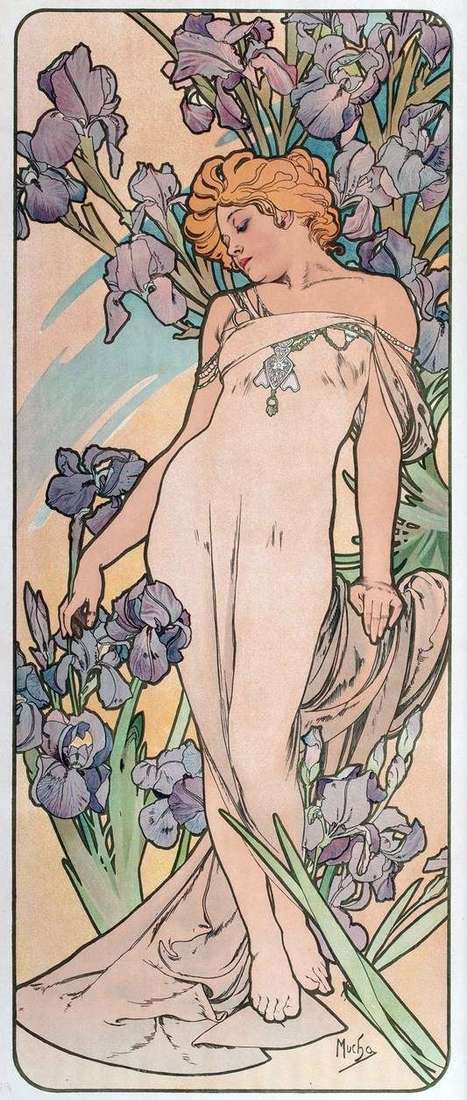 Iris by Alphonse Mucha
Iris by Alphonse Mucha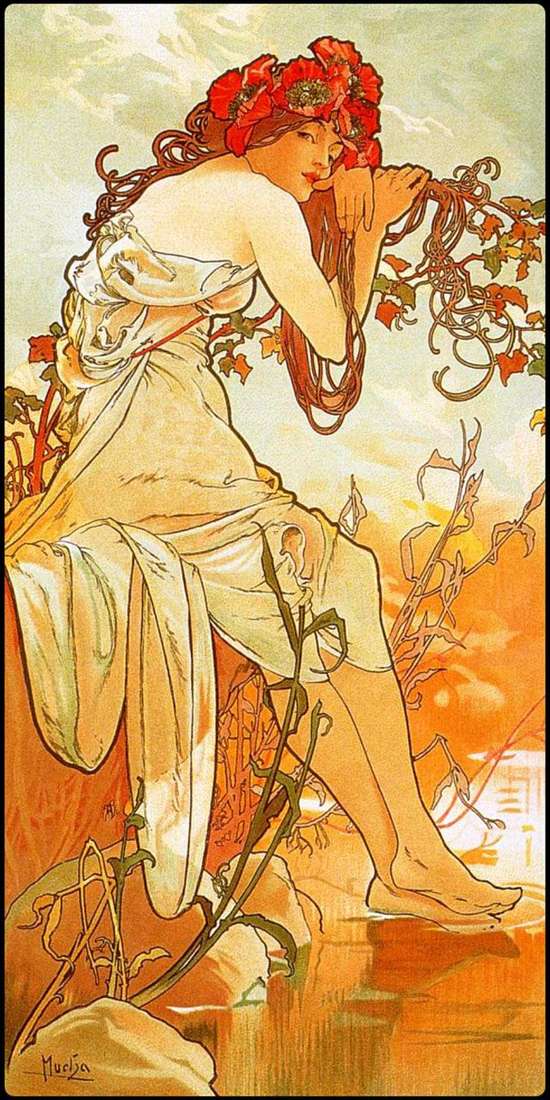 Summer by Alphonse Mucha
Summer by Alphonse Mucha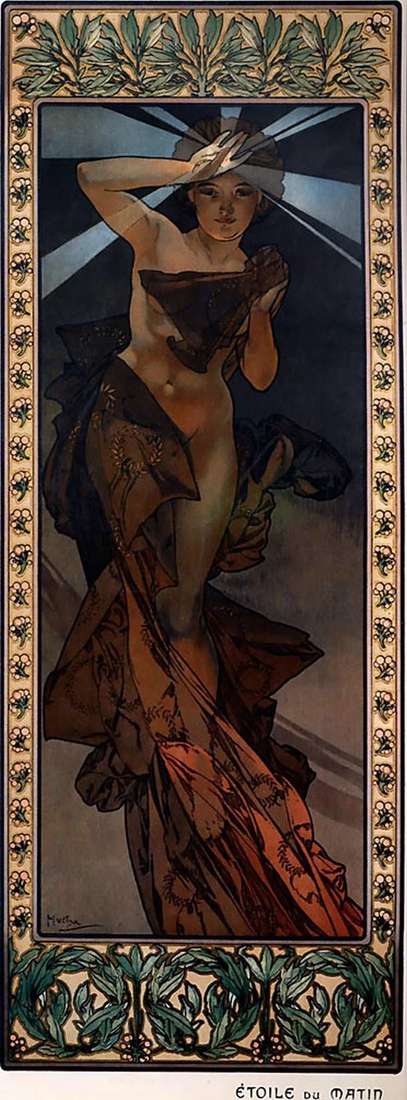 Morning Star by Alphonse Mucha
Morning Star by Alphonse Mucha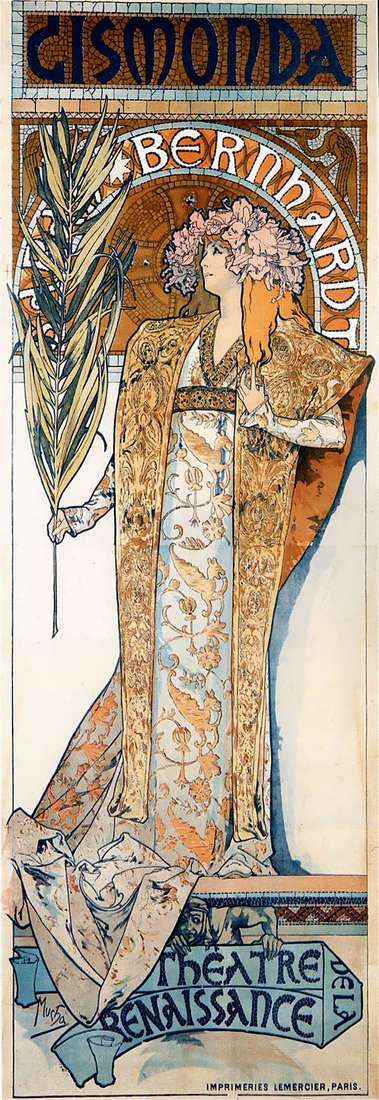 Jismond by Alphonse Mucha
Jismond by Alphonse Mucha